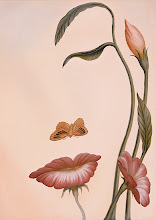

John Hutchinson, a surgeon, recognized that the volume of air that can be exhaled from fully inflated lungs is a powerful indicator of longevity. He invented the spirometer to measure what he called the vital capacity, ie, the capacity to live. Much later, the concept of the timed vital capacity, which became known as the FEV1, was added. Together, these two numbers, vital capacity and FEV1, are useful in identifying patients at risk of many diseases, including COPD, lung cancer, heart attack, stroke, and all-cause mortality. This article cites some of the rich history of the development of spirometry, and explores some of the barriers to the widespread application of simple spirometry in the offices of primary care physicians.
John Hutchinson, a surgeon, invented a calibrated bell, inverted in water, in order to be able to capture and measure the volume of exhaled air from fully inflated lungs. He coined the term vital capacity, ie, the capacity for life, because he realized that compromise of this crucial measurement was predictive of premature mortality. His exacting observations taught him that in normal subjects, the vital capacity was directly related to the height, and inversely related to the age of the individual. Weight had only a minor effect on the vital capacity, but he observed that vital capacity became mildly reduced following a large meal.1 In his first article published in 1846, he reported on measurement of 2,130 individuals, including deceased patients .Hutchinson would go to the morgue immediately following death, insert into the trachea the equivalent of an endotracheal tube with a stopcock, and inflate the corpse with a bellows until no more air could enter. He then released the flow of air into his spirometer by opening the stopcock. The lungs and thorax emptied through elastic recoil. Of course, this was not the full FVC, but something very close to it. The lungs emptied to their minimum volume, a function of the residual volume. In this era, tuberculosis was rampant in Europe. Hutchinson recognized that fibrotic complications from tuberculosis resulted in a reduced vital capacity and early death. Similar observations were made in heart failure and in coal miners.2
Hutchinson was a handsome young man . He had a keen ear for music and became a master violinist. Hutchinson became a consultant to the insurance industry of London. He believed that the vital capacity should be used in actuarial predictions for persons selling life insurance. Hutchinson’s invention was initially acclaimed:
…we have no hesitation in recording our deliberate opinion, that it forms one of the most valuable contributions to physiologic science that we have met with for some time. In all future investigations into the phenomena of the respiratory process, the name of Mr. Hutchinson must receive honorable notice.2
Hutchinson’s instrument was not widely accepted in London, or anywhere else, and still remains absent from most physicians’ offices and clinics. This may be one of the reasons why John Hutchinson was frustrated when he left his wife and three children and emigrated to Melbourne, Australia at 41 years of age.
He may have been in search of gold, since a gold strike had just been made in Australia. Another speculation is that he had tuberculosis and sought the cure of a prolonged ocean voyage with abundance of fresh air and sunshine, which was a common method of seeking the cure for tuberculosis in that era.2 Other speculations over alcohol abuse were made.2 After he reached Australia, he abandoned all further use of his spirometer. Toward the end of his life he moved to Fiji, where he died at 50 years of age, probably a victim of murder.2 His autopsy showed no signs of tuberculosis, nor did it explain his demise.5 No evidence of liver disease was found at autopsy.2
A statue was erected to the memory of John Hutchinson by the Thoracic Society of Australia and the British Thoracic Association in 1990 . It can be viewed by visitors to Fiji.
For details read the full article John Hutchinson’s Mysterious Machine Revisited*
Thomas L. Petty, MD, Master FCCP in the CHEST Journal
http://chestjournal.chestpubs.org/content/121/5_suppl/219S.full
CHEST May 2002 vol. 121 no. 5 suppl 219S-223S


























